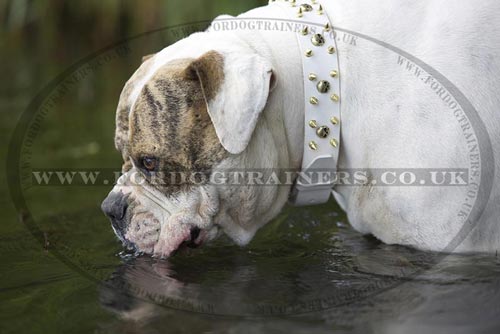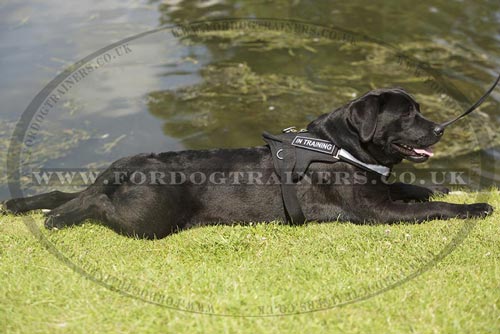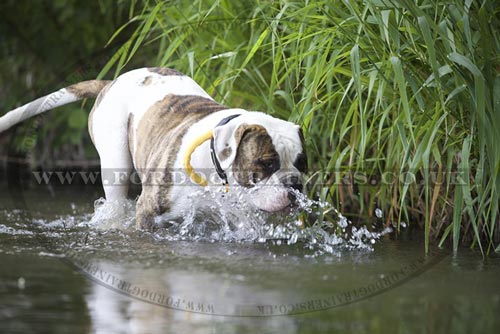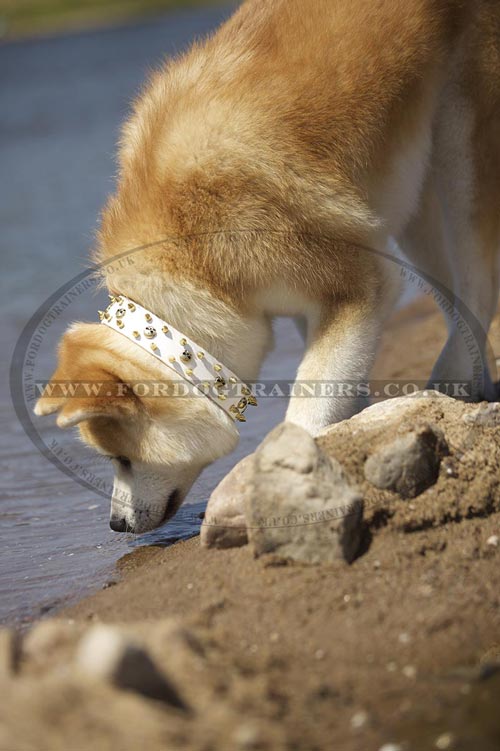Heat Strokes and Impact on Dog's Health
 Results of heat strokes in dogs may be very serious. Heat stroke or hyperthermia can happen very quickly and it can lead to fatal outcome. Heat stroke may result in dog's sleepiness, weakness, collapse, coma, brain damage and death. If the body temperature is above 42 C, heart, brain, liver and kidneys fail to work.
Results of heat strokes in dogs may be very serious. Heat stroke or hyperthermia can happen very quickly and it can lead to fatal outcome. Heat stroke may result in dog's sleepiness, weakness, collapse, coma, brain damage and death. If the body temperature is above 42 C, heart, brain, liver and kidneys fail to work.
Fortunately, heat stroke or thermal shock can be prevented. If you provide a dog with first aid at the initial stage of overheating, this impact will be reversible. After the first aid you should consult a veterinarian with further examination of your pet. That's important because heating effect may be evident later. To these disease consequences belong renal failure, heart rhythm disorder, and convulsions. Immediate treatment will minimize risks and will save dog's life. You should be careful, even if the temperature seems not very high for you, it may lead to heat stroke for a dog within a short time.
How to Determine That a Dog is in Danger of Overheating?
There's no definite answer how to determine that a dog is getting overheat. It depends on the dog and the situation. Of course, all dogs are under threat in extreme temperature conditions. A dog that is used to the temperature 20-25 C in summer will react much worse to the temperature 30-35 C, than the same dog breed that grown up in the hot southern regions and is used to such climate. It's just that very case when we don't recommend dog owners to take a pet with them to the seaside or other unusually hot for a dog places. If there's someone who can look after your pet, don't take it with you on holidays. Apart from the temperature, there are other important factors: humidity, shadow, time spent in heat, dog's activity and presence of water for drinking.
Some dog breeds, such as northern breeds (Malamute) and dogs with a short brachycephalic snout (Pug dog, Boxer, Bulldog) stand heat harder than other dogs. Puppies less than 6 months age, old and overweight dog stand high temperature worse. To high-risk group also belong pets with heart and lungs diseases. A dog who suffered thermal stress once is also in the high-risk group. 
How to Understand That a Dog is Hot?
The best way to see that a dog is in danger is to control its body temperature. Of course, it's not very practical and convenient in our everyday life, but if you have a suspicion of dog overheating the first thing to do is to check the dog's temperature. Heavy breathing, low activity, slow movements, digging holes in search of a colder place all this will indicate you that a dog is hot. All these symptoms mean that you should immediately assume the measures to help the dog get cold.
One of the most common reasons of dog heat strokes is leaving pets in the car for some time. Even if it's about 20 C outside, in the closed car the air may reach the temperature 45-48 C in a very short time.
Prevention of Heat Stroke in Dogs
Mostly preventive measures of heat stroke in dogs come from owner's common sense.

Heat Stroke Symptoms
 Symptoms of dog overheating are:
Symptoms of dog overheating are:
Symptoms of heat stroke are:
Brain damage starts with 41-42 C. Normally dog's temperature is 38-39 C.
First Aid and Treating Heat Stroke in Dogs
Now let's have a look at the most important point. The faster you provide your dog with the first aid, the more chances you have to save its life! That's why you need to have everything ready at hand.
First, you need to make dog's temperature lower. Take a dog to a cold place and use water to get a pet cold. Place the dog's head lower than its body. The head will get brood inflow in this position. Don't use freezing cold water in heat stroke, because it causes blood vessels compression and inner organs cannot get cold quickly, and the most important is their cooling. The best is to pour water on dog's belly and armpits, water dog's mouth and place a wet towel on the dog's head. Don't cover the whole body with the towel, this will slow the cooling process. Don't give dogs of large breeds who tend to volvulus (such as mastiff) too much water to drink, it may cause stomach disorder. The fastest way to get a dog cold is alcohol, not water, as it evaporate quickly.
If a veterinary clinic isn't far, hurry up and move to the next step of treatment. Enema with cold water will help to cool inner organs. Be careful and do not go too far in the process of cooling. You can overcool a dog. You should control the temperature all the time, the best way is to measure it rectally. When the body temperature reaches 39.5 C, you may stop treatment. Dog's temperature is 38-39 degrees normally, so your pet feels better.
Our dog accessories will help you:
Get a non-spill water bottle to let your dog drink any time in walking or travelling. Use a brush to get rid of dead fur and let dog skin breath and cool better.